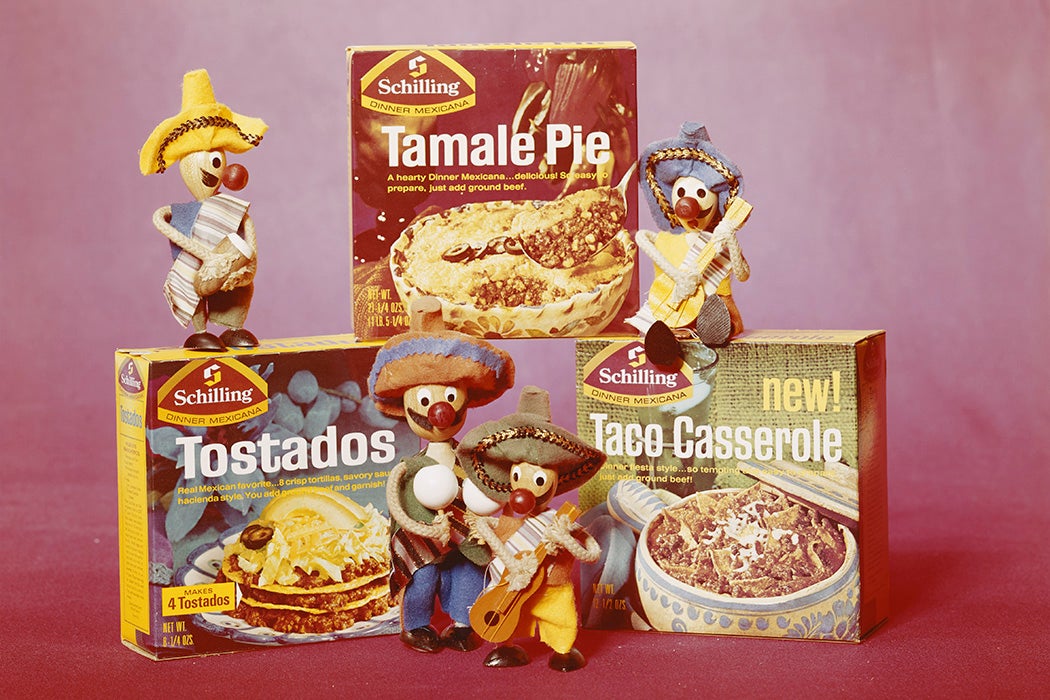“Mexican” food north of the border is distinctly American, a “combination plate” of centuries of Native American, Hispanic, Mexican-American, and Anglo influences. It’s not what you’ll typically find in Mexico, but it does have a history in its own right.
Food historian Jeffrey M. Pilcher explores this backstory, revealing the similarities and variations in cooking across the culinary regions of Texas, northeastern Mexico, New Mexico, Sonora (which also straddles the border), and California. In addition to being a story of deliciousness, it’s a tale of fusion that “reflects the ongoing struggle of Mexican Americans to gain acceptance and citizenship in the United States.”
While “a bowl of red” (chili) “has been stripped of its ethnicity to become the state dish of Texas,” Pilcher writes, Mexican Americans “retained a repertoire of other foods that affirmed their identity precisely because of the scorn they attracted from the Anglo elite.” Goat (cabrito), offal (menudo, arrachera), and pit-barbecued bull head (barbacoa de cabeza) were some of these.
Meanwhile, Mexican American restaurants adopted menus featuring numbered combination plates, possibly in early twentieth-century Texas. Although these are “rarely seen in Mexico,” writes Pilcher, they’re “one of the mainstays of Mexican American restaurants[.]” With numbers, “the combination plates relieved non-Spanish speakers of the need to pronounce what they were eating, a strategy [also] adopted by Chinese cooks seeing a crossover clientele.”
Soon came the mass marketing of Mexican American cuisine, which didn’t necessarily benefit Mexican Americans. It was a German immigrant who popularized chili powder (“Tampico Dust”) across the United States. According to Pilcher, one Elmer Doolin “purchased the formula for Fritos corn chips from a nameless Mexican American in 1932.” Dave Pace began bottling salsa in 1948; in 1991, salsa surpassed ketchup as the best-selling condiment in the US. In the 1980s, the fad for fajitas “drove the price of skirt steak out of the reach of working-class Hispanics who invented the dish.” Fish tacos were popularized by surfers.
Then, in 1962, Taco Bell was founded in California. Glen Bell fried his tortillas in advance, creating the prototype of the hard shell taco and sidelining fresh tortillas. There are now more than 7,000 Taco Bells around the world.
Meanwhile, “culinary legends” about who “invented” nachos, margaritas, and green enchiladas with chicken reveal what Pilcher calls “a desire for acceptance of ethnic foods by the broader society.” As do humorous stories of celebrities doing it wrong: presidential hopeful Thomas E. Dewey tucking a flour tortilla into his collar, thinking it was a napkin, in 1946; President Gerald Ford’s “Great Tamale Incident” of 1976, when he neglected to take the corn husk off a tamale before biting into it.
Weekly Newsletter
Long-simmering tensions between “authenticity and adaptation” were felt when Southwestern food graced the tables of high-end establishments beginning in the 1980s. Now the chefs became celebrities, sometimes with dishes that only had a “superficial resemblance to either Mexican or Mexican American cooking” but that in turn influenced the menus of the most expensive restaurants in Mexico City.
Pilcher is optimistic, writing that “neither commercialization, mass production, McDonaldization, Yuppifiction, nor any other menace of modern life has alienated these foods from cooks, both Hispanic and non-Hispanic, who invest the time to prepare them.” He concludes, “the ‘Mex’ thus belongs to anyone willing to embrace it.”







